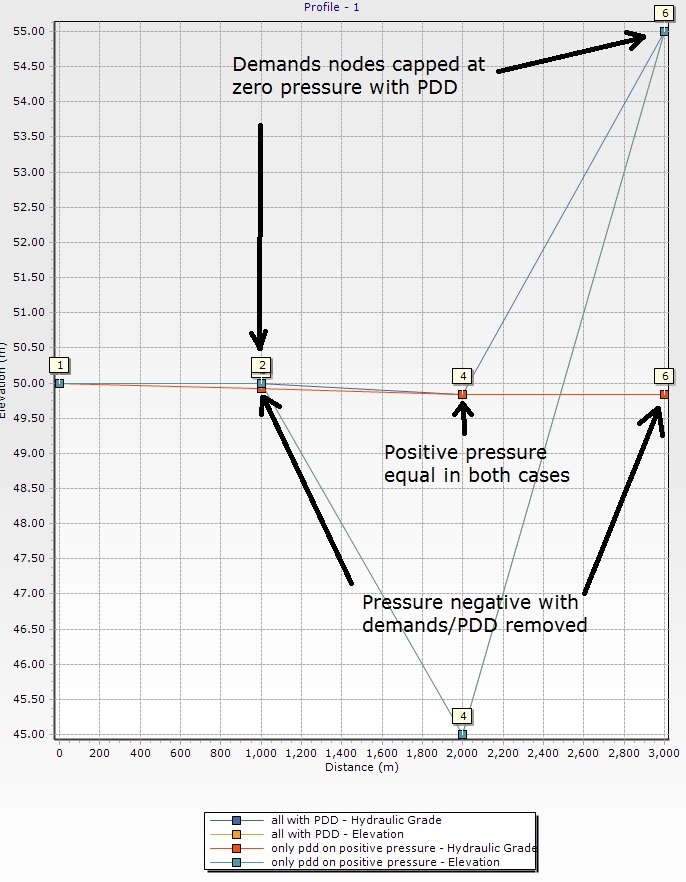| Product(s): |
WaterGEMS, WaterCAD |
| Version(s): |
10.XX.XX.XX, 08.11.XX.XX |
| Area: |
Calculations |
Problem
How do pressure dependent demands (PDD) handle a situation where the pressure drops all the way to zero?
I'm seeing an odd jump in hydraulic grade (up to the node elevation) at pressure dependent demand locations. Why?
Solution
One of the assumptions with the PDD feature is that the pressure cannot drop below zero. If this happens, it will be "capped" at zero pressure and thus the hydraulic grade will be equal to the node elevation, even if surrounding nodes are at a lower hydraulic grade. This can have the effect of the HGL appearing to "jump" up unrealistically, as the pressure would have otherwise been negative.
Pressure dependent demands are useful for cases where a change in pressure has a significant effect on the quantity of water used. Such flow variations can happen when the pressure is low, but can also happen in the normal to high pressure range as well. Typically you would not be looking at conditions where the pressure drops so low that it becomes negative. Since the PDD function (pressure vs. flow curve) isn't defined below zero pressure, it cannot determine what the pressure would be.
The important thing is that the demand is calculated as zero when the pressure drops to zero as opposed to emitter coefficients which could introduce negative demand (inflow) at negative pressures. In fact, this downside to emitter coefficients is one of the reasons for having the PDD feature. Although the pressure being reported as zero may not be ideal, it still identifies cases where the pressure is deficient to the point where no demand would be supplied and gives an accurate picture of the demand shortfall.
If you're concerned that this assumption might effect other pressures in the model, this should not occur. To prove this, run your model with PDD and identify cases where this occurs (PDD demands fall to zero pressure). Set up a new scenario with a new demand alternative where these demands are deleted, and a new calculation option set where the PDD selection set is set to a selection set that does not include those nodes. Run the model and compare results between the scenarios. The pressures at the other nodes (with positive pressure) should be the same.
One thing you may want to consider is when pipes refill. In the cases where pressure drops low enough to become negative, the pipes may partially or fully drain. Since WaterGEMS assumes that pipes are always full, when the pressures rise again, WaterGEMS will say that the demands will be supplied much faster than they really would be, because much of the water supplied would be going toward filling the pipes.
Related Enhancement: ID # 199054

See Also
Using Pressure Dependent Demands